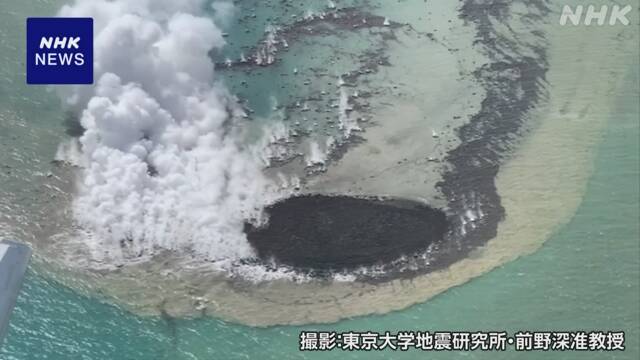An eruption occurred off the coast of Iwo Jima in the Ogasawara Islands in October, and a large amount of rocks piled up to form a new island, according to observations by the Earthquake Research Institute of the University of Tokyo. Experts point out that 'phreatic magma explosions' are occurring, and as long as the eruption continues, the island may expand.
On October 10, Associate Professor Fukaku Maeno of the Earthquake Research Institute of the University of Tokyo observed Iwo Jima from the sky and confirmed that a black plume containing rocks rose more than 30 meters high every few minutes about 1 km off the coast of the island.
The rocks that blew out vigorously are several meters long, and it is believed that a "phreatic magma explosion" caused by direct contact with high-temperature magma is occurring.
In addition, a new blackish island with a diameter of about 100 meters was also confirmed to be formed just north of the eruption.
According to Associate Professor Maeno, the surface is covered with craggy rocks, which are thought to have been formed by the accumulation of rocks ejected by the eruption.
No crater was confirmed on the new island, but it is thought that magma is erupting from this place because pumice stones are floating in the vicinity and seawater is discolored, and Associate Professor Maeno says that eruptions are expected to occur in at least two places.
Associate Professor Maeno said, "There have been eruptions in this place in the past, but it has been a long time since eruptive activity has become so active that magma is involved to form an island," and "There is information that the island is expanding even this month.

